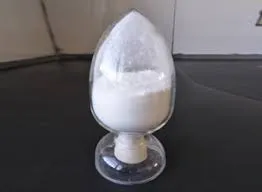Antifoam in Water Treatment A Comprehensive Overview
Water treatment processes are critical for ensuring clean and safe water supplies for various uses, including drinking, agriculture, and industrial applications. One of the many challenges faced in water treatment is the formation of foam. Excessive foam can hinder operations, reduce the efficiency of treatment processes, and create other operational challenges. This is where antifoam agents come into play.
What is Foaming?
Foaming occurs when gases are trapped in a liquid, leading to the formation of bubbles. In water treatment, foam can result from various sources, including organic matter, surfactants, and the biological processes in activated sludge systems. While some foaming can be natural, excessive foaming is undesirable as it can obstruct equipment, reduce liquid capacity, and lead to environmental compliance issues.
The Importance of Antifoam Agents
Antifoam agents, also known as defoamers, are chemical additives designed to reduce or prevent the formation of foam. Their primary function is to destabilize the foam structure, allowing bubbles to collapse and minimizing foam formation. In water treatment, antifoam agents play a crucial role in ensuring operational efficiency and the effectiveness of the treatment process.
Types of Antifoam Agents
1. Silicone-Based Antifoams These are among the most widely used antifoam agents in water treatment. Silicone-based formulations are effective at controlling foam in a broad range of applications. They work by spreading across the liquid's surface, reducing the surface tension and destabilizing foam.
2. Non-Silicone Antifoams These agents include a variety of organic compounds, such as oils and fatty acid esters. Non-silicone antifoams can be particularly useful in specific applications where silicone-based products might not be compatible or effective.
3. Polymer-Based Antifoams These are made from polymeric materials and offer a method for foam control by altering the properties of the liquid medium. Polymer-based antifoams can be tailored to target specific foam types and processes.
Applications in Water Treatment
antifoam water treatment

- Wastewater Treatment In the treatment of municipal and industrial wastewater, foam can be generated during biological treatment processes. The use of antifoam agents ensures a smooth operation by reducing the volume of foam produced, thus enhancing settling processes and eliminating the need for manual removal.
- Surface Water Treatment Antifoams are also utilized during the treatment of surface water, where natural organic materials may lead to foaming. Antifoam interventions aid in achieving compliance with regulatory standards and improve the efficiency of filtration processes.
- Industrial Applications Various industries, including food processing, petrochemicals, and pulp and paper, utilize antifoam agents to manage foam formation during water treatment processes. The management of foam in these industries is vital for maintaining productivity and reducing downtime.
Choosing the Right Antifoam
Selecting an appropriate antifoam agent depends on several factors, including the type of foam present, the specific treatment process, and the potential impact on the quality of the treated water. Some considerations include
- Effectiveness The antifoam should be able to effectively reduce the foam without requiring excessive dosages.
- Compatibility Ensure that the antifoam is compatible with the other chemicals and materials used in the treatment process.
- Environmental Impact Choosing biodegradable and environmentally friendly antifoam agents is crucial for sustainable water treatment practices.
Conclusion
Antifoam agents are indispensable in the water treatment sector. Their ability to control foam not only enhances the efficiency of treatment processes but also helps in maintaining compliance with environmental regulations. As water treatment technologies continue to evolve, the development of more effective and environmentally friendly antifoam agents will remain a key area of focus. By understanding the role of antifoam in water treatment, operators can make informed decisions that align with both operational goals and environmental sustainability.

